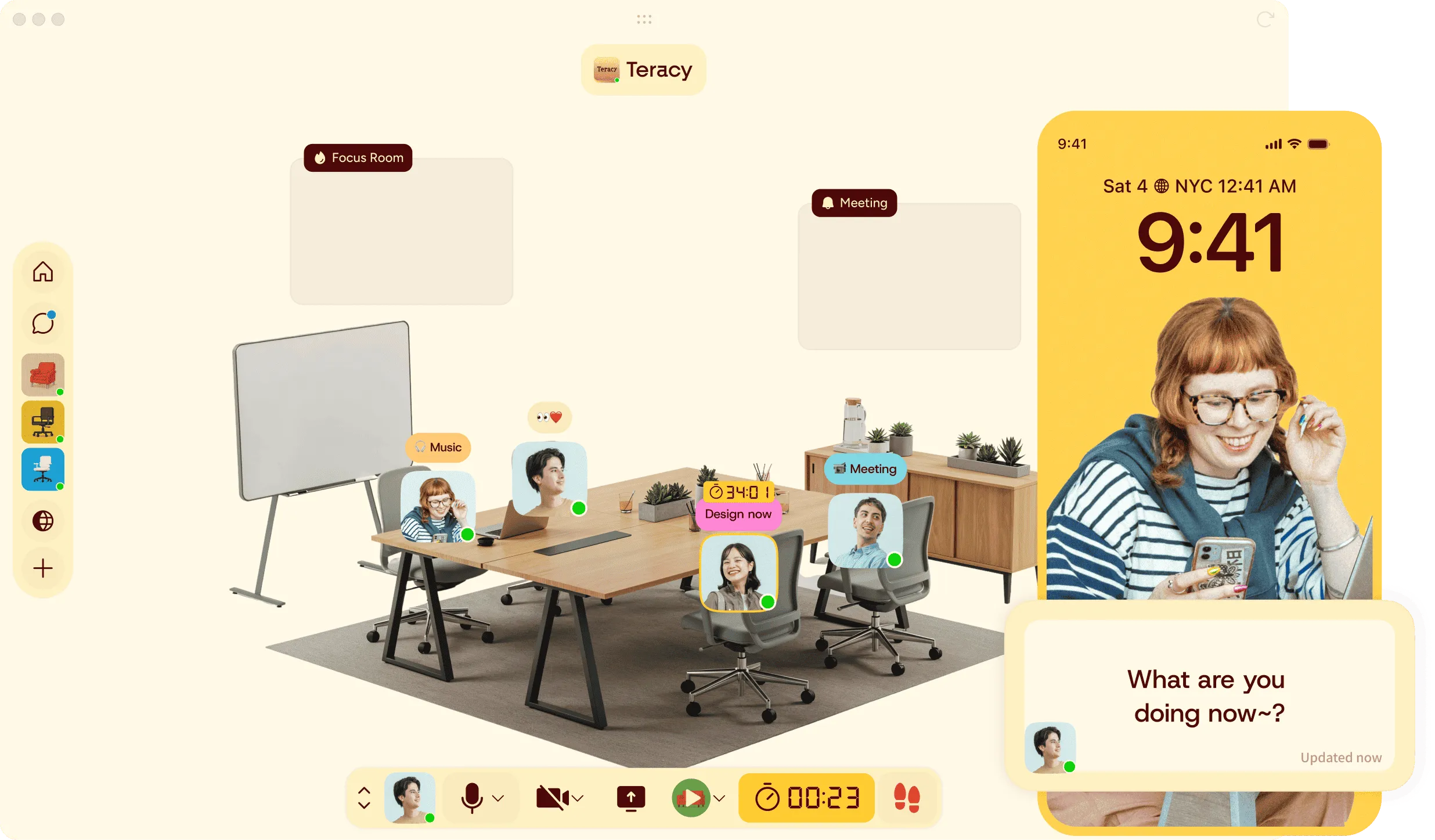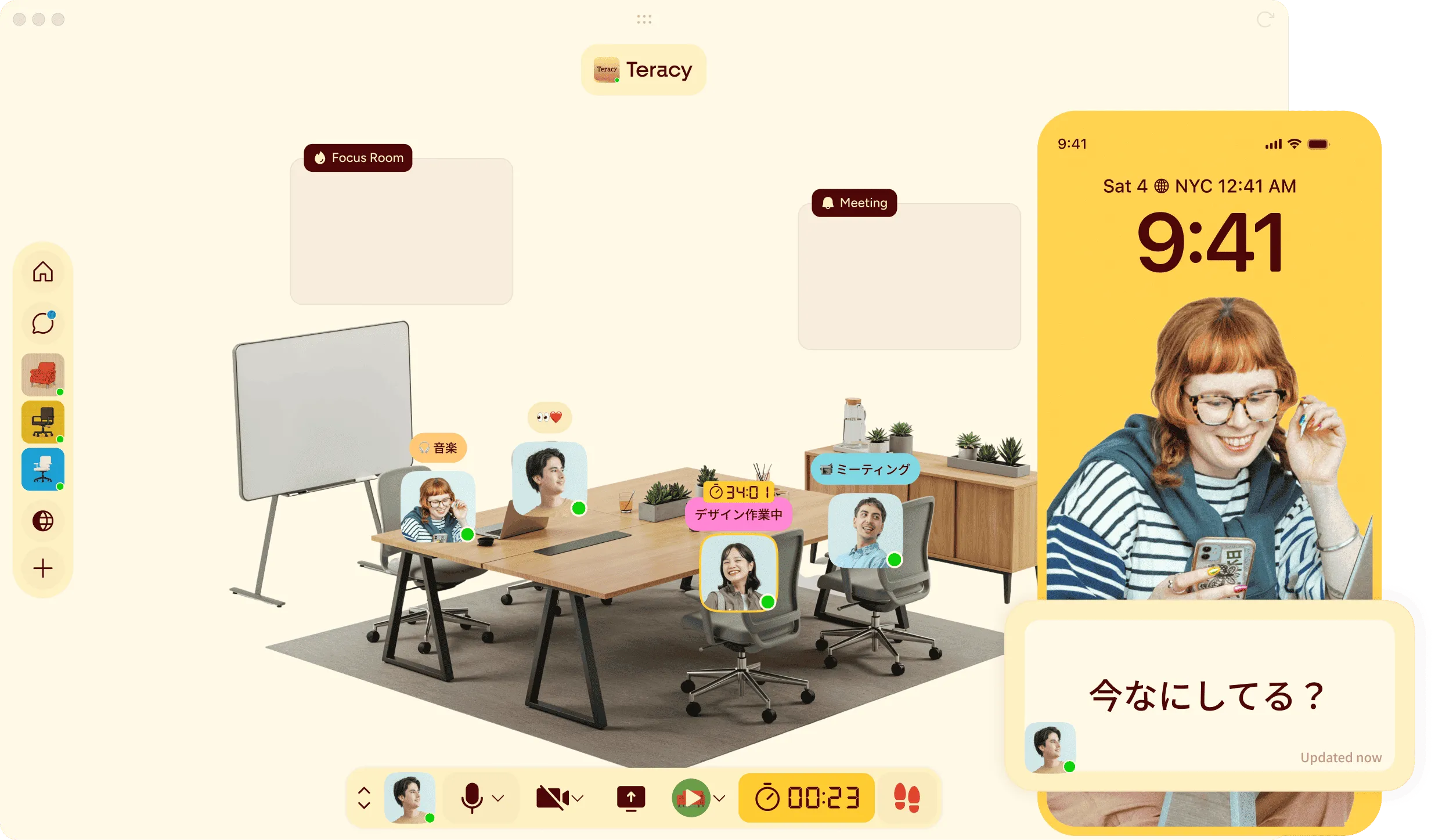Story
[Why I Joined Teracy] 一通のDMから始まった、日本とシリコンバレーを繋ぐ僕の新たな挑戦
SHARE THIS POST
My first interaction with the Teracy team started through a random Twitter DM. Emo, the founder, reached out asking for advice on how to expand Teracy to Indonesia.
私がTeracyチームと初めて関わったのは、
TwitterのランダムなDMがきっかけでした。
創業者のEmoさんが、Teracyをインドネシアに展開する方法についてアドバイスを求めて連絡をくれたのです。
At the time, I had just exited my startup and was in that weird in-between stage — not fully resting, but not building anything new either.
I was exploring ideas, talking to founders, and figuring out what I wanted to work on next.
その頃、私は自分のスタートアップを売却したばかりで、
完全に休んでいるわけでもなく、
かといって何か新しいものを立ち上げているわけでもない、
不思議な「合間」の時期にいました。
アイデアを探し、創業者たちと話し、次に何に取り組みたいかを模索していました。
So when Emo messaged me, I said sure, let’s chat.
だからEmoさんからメッセージが来たとき、「ええ、ぜひ話しましょう」と返事をしました。
That first call turned out to be one of those unexpectedly good ones.
その最初の通話は、予想外に素晴らしいものの一つとなりました。

The team wasn’t just another “remote work app” startup.
You could tell they cared deeply about craft — how things looked, felt, and worked.
Every design detail felt intentional. Every choice seemed to come from people who genuinely loved building great products.
チームは単なる「リモートワークアプリ」のスタートアップではありませんでした。
彼らがクラフト、つまり見た目や感触、そして機能性を深く大切にしていることが伝わってきたのです。
デザインの細部にはすべて意図が感じられ、すべての選択は、心から良い製品を作ることを愛する人々から生まれているように見えました。
They’d been at it for five years, improving, iterating, and learning from users along the way. You don’t often see that kind of quiet persistence.
彼らは5年間、改善と試行錯誤を繰り返し、
その過程でユーザーから学び続けていました。
このような静かな粘り強さは、なかなか見られるものではありません。
I left that call thinking, these people actually care.
通話を終えたとき、私は「この人たちは本気だ」と思いました。
Over the next few weeks, we kept talking.
About global expansion, about product culture in Japan,
その後の数週間、私たちは話し合いを続けました。
グローバル展開について、日本のプロダクトカルチャーについて、
About what it takes to bring an Asia-based product to the world.
そしてアジア発の製品を世界に届けるために何が必要かについて。

Teracy’s team is mostly Japanese, and they had big global ambitions.
That’s where I felt I could contribute.
Teracyのチームはほとんどが日本人で、大きなグローバルな野望を持っていました。そこにこそ、私が貢献できると感じたのです。
Having worked with teams in both Asia and the U.S., I’ve seen how different building cultures can be.
アジアとアメリカの両方でチームと仕事をしてきた経験から、
ものづくりの文化がいかに違うかを見てきました。
The Japanese way values precision, patience, and long-term craft.
The Silicon Valley way values speed, experimentation, and storytelling.
Both are powerful on their own, but combining them feels special.
日本流は、正確さ、忍耐、そして長期的なクラフトを重んじます。
シリコンバレー流は、スピード、実験、そしてストーリーテリングを重んじます。どちらもそれ自体で強力ですが、それらを組み合わせることは特別なことだと感じます。
Joining Teracy felt like a chance to do that. To learn the Japanese way of building things properly and thoughtfully, while adding what I’ve learned from San Francisco
— How to move fast, ship, and tell a story that resonates globally.
Teracyへの参加は、それを実現するチャンスのように感じました。
物事を適切かつ思慮深く構築する日本流のやり方を学びながら、
サンフランシスコで学んだこと、つまり速く動き、製品を出し、世界に響くストーリーを語る方法を付け加えるチャンスです。
It also helped that I’m based in Asia.
The time zones work.
The cultural values line up.
Building trust and collaboration comes naturally.
私がアジアに拠点を置いていることも好都合でした。
タイムゾーンが合いますし、文化的価値観も一致します。
信頼と協力を築くことが自然にできるのです。
Most of all, I joined
because I believe in what Teracy is trying to build.
何よりも、私が参加したのは、
Teracyが作ろうとしているものを信じているからです。

Most remote tools today are built for efficiency.
But what people really miss isn’t the office — it’s the feeling of being together. The quiet comfort of sitting next to someone working on their own thing. The sense of presence, even without talking.
今日のリモートツールのほとんどは効率性のために作られています。
しかし、人々が本当に恋しく思っているのはオフィスではなく、
「一緒にいる」という感覚です。
誰かの隣で、その人が自分の作業に集中している、その静かな心地よさ。
話さなくても感じられる存在感。
That’s what Teracy is trying to recreate.
それこそが、Teracyが再現しようとしているものなのです。
For me, this is a new challenge worth taking on.
Helping an Asia-based startup go global.
Helping a small, obsessive team tell their story to the world.
私にとって、これは挑戦する価値のある新しい課題です。
アジア発のスタートアップが世界に進出するのを手伝うこと。
小さくも情熱的なチームが、そのストーリーを世界に伝えるのを手伝うこと。
And maybe, in the process,
shaping what the next generation of remote work can feel like.
そして、その過程で、
次世代のリモートワークがどのようなものになるかを形作っていくこと。
Tim Wijaya
SHARE THIS POST
More in
Story








